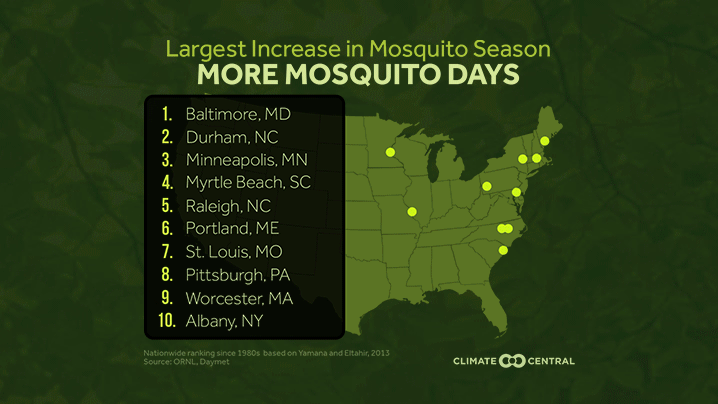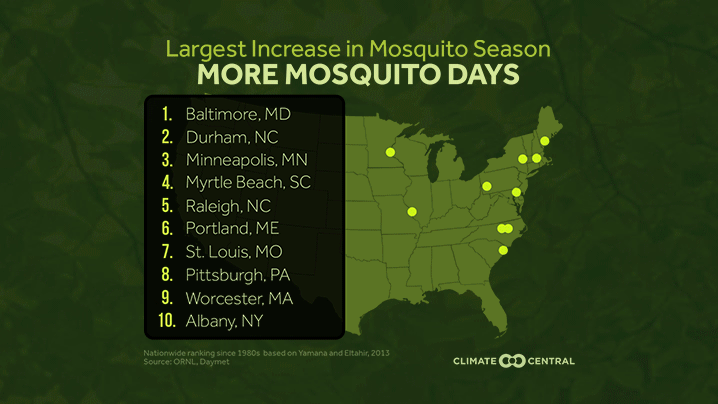


Mosquito populations surge during the summer months, as hot and humid conditions provide fertile breeding conditions for these insects. Their bites can be more than just a menace and a discomfort, as these insects transmit diseases like West Nile, malaria, and more recently, Zika.
See which cities have the greatest changes in mosquito-suitable days >>
As warmer air leads to more evaporation, the warming that has come with the buildup of greenhouse gases in the atmosphere has led to an increase in humidity in much of the U.S. The higher temperature and humidity mean that the number of days each year which are conducive to mosquitoes has risen in several areas. For example, some of the largest increases in these mosquito days have been on the East Coast and in the Upper Midwest. Baltimore, Maryland and Lacrosse, Wisc., each have an additional full month each year favorable for mosquitoes compared to the 1980s.
However, at very low humidity levels, and at temperatures outside of an optimal range of 50°F to 95°F, the mortality rate of mosquitoes is very high. Some places are getting so hot that there is a decrease in the number of days each year when mosquitoes can thrive. But even these places still have long mosquito seasons, meaning viruses like Zika and West Nile could spread.
As warming continues into mid-century, the area favorable to mosquitoes will continue to shift and grow. A study cited by the National Climate Assessment indicated that the area in the Northeast suitable for the Asian Tiger mosquito, which is one type of mosquito that can transmit Zika, will increase between 43% and 49% by the end of the century. This mosquito already ranges as far north as New England and Minnesota.
The changing climate means new problems with insects in places that have not had them in the past, and the potential for diseases that were previously unseen in those areas.
Methodology: The formula for mosquito-suitable days is based on National Institute of Health studies incorporating temperature and humidity. This analysis examines conditions on individual days rather than multi-day heat events which can affect mosquito populations.
